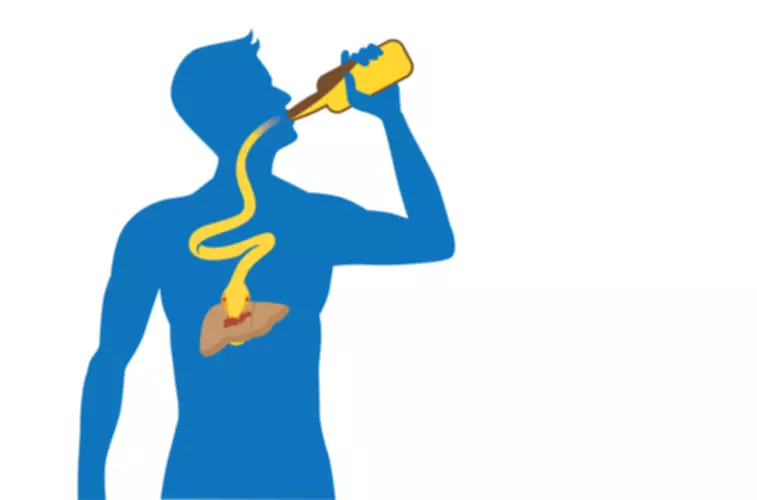The percentage of abstinence from amphetamines had a range from 40.8% [21] to 58.3% [20] among treated participants at six-month follow-up. A review indicated that the long-term efficacy of behavioral interventions is high in terms of treating substance abuse [26]. Heavy METH use has toxic effects on the brain, mainly on the nigrostriatal dopamine pathway, that are mediated by oxidative stress, inflammation and excitotoxicity [19]. People who abuse METH heavily suffer from a variety of neurological consequences of chronic abuse of the drug and have the hardest time quitting METH use [29-31].
- When used for medical purposes, the doses are much lower than those typical among abusers of the drugs.
- While women are underrepresented in the reviewed studies as a proportion of the population overall, they may not be underrepresented as a proportion of the population who present for treatment.
- Additional clinical studies assessing the natural history of amphetamine withdrawal, the role these symptoms play in relapse to amphetamine use, as well as the validity and reliability of clinical measures to assess amphetamine withdrawal, are also needed.
- Nevertheless, there is evidence for CM decreasing METH use months post-treatment [88].
- If a person has been misusing more than one substance, the medical and therapeutic professionals designing their treatment plan will address each substance separately.
R.I. is using a new app to help people stay off drugs. But is it reaching those most in need?
Rep. Patrick J. Kennedy, a leading advocate for mental health and addiction care who Politico described as the “go-to player” for companies with a stake in the multibillion-dollar response to the opioid crisis. For objective outcomes (discontinuation rates), blindness of participants, personnel, and outcome assessors differed across studies. Because we judged that the objective outcome was unlikely to be influenced by the lack of blinding, all studies were determined to be at low risk of bias. D. Incomplete outcome data were considered for all outcomes except for discontinuation rates. Studies were considered at low risk of bias if they adequately addressed missing data. All relevant randomised controlled trials (RCTs) and clinical controlled trials (CCTs) were included.

Discover: Learn About Addiction
- Agonists for receptors for other monoamines (noradrenaline, serotonin) have been tested in clinical trials as potential medications for MUD because they increase dopamine release in the nucleus accumbens and because they decrease negative affective symptoms.
- The antibody is currently tested in Phase 2 trials [129] (ClinicalTrials.gov).
- Binge use involves a rapid escalation of METH intake, followed by a period of abstinence [25-27].
Furthermore, using pharmacological treatments combined with BCBT is applicable to a broad range of patients due to the practical techniques and skills that such therapies impart to patients [10]. To date, there are no systematic reviews that specifically show the effectiveness of pharmacological treatments alone or in combination with BCBT in treating Iranian amphetamine abusers. To date, there is no systematic review to specifically show the efficacy of BCBT for treating amphetamines abusers in the world. In other words, it is not documented how BCBT is efficacious for treating amphetamine abuse/use disorder alone or in combination with pharmacological treatments in other countries. The current systematic review aims to address these two gaps in the research literature.
Risk of Bias Within and Across Studies
The current trial provided eight two-hour sessions to 77 of 154 patients in methadone treatment for opioid use disorder. A small pilot study found that mindfulness training combined with methadone treatment produced good outcomes. The pilot’s success paved the way for this larger study, which, in turn, has justified two large-scale studies that could change standards of care. Mindfulness training teaches people to focus on the present moment, without judgment, and on sensory inputs such as the feeling of breathing in and out.
However, the data we reviewed herein was disparate in respect to the reported outcomes and measures. This prohibited meta-analysis of the literature but allowed for a comprehensive report on the current status of the research. The titles and abstracts of the studies Amphetamine Addiction identified by the search strategy were evaluated by two reviewers (KS and LA) independently. Divergent selection of publications was discussed among the investigators until a consensus was obtained, and if required a third reviewer (NE) resolved disputes.
Comparison 1 Any pharmacological treatment versus Placebo, Outcome 4 Average score in craving. In conducting a meta‐analysis, a fixed effect model, an analysis that ignores the between‐study variation, can give a narrower confidence interval than a random effect model. It is generally agreed that the fixed effect model is valid as a test of significance of the overall null hypothesis (i.e. ‘no effect in all studies’). A statistically significant result obtained by the use of this model indicated that there is an effect in at least one of the studies. Because of these advantages, the fixed effect model was used for the synthesis of a group of data with homogeneity.

Abstinence as an outcome can be determined by self-report, or by negative UDS at time points pre-determined (see Table 5). The desired goal of pharmacotherapy will likely vary depending on the patient, and must be patient-focused and clinically relevant. Nearly a quarter of the reviewed studies had no female participants, and male sex made up over 70% of the population https://ecosoberhouse.com/ across all studies. In some cases, this was due to the setting (e.g. male-only residential treatment centres), or studies conducted in specific populations (e.g. men who have sex with men), and in others the reason is not clearly stated. Research suggests women who take stimulants are more likely to become dependent consumers than men who take stimulants [77].
References to other published versions of this review

This disorder is currently treated with behavioral therapies; however, these therapies have limitations and would benefit from the addition of a MUD pharmacotherapy. Unfortunately, clinical trials have not yet found consistently effective pharmacotherapy for MUD. This review outlines the history of METH use, provides information on current prevalence of METH abuse and MUD, describes medications that have been in clinical trials for MUD, and addresses current as well as potential new treatments for MUD. Users of amphetamines are also twice as likely to need long-term treatment than users of other drugs (17% versus 8%).
Could New Weight-Loss Drugs like Ozempic Treat Addiction? – Scientific American
Could New Weight-Loss Drugs like Ozempic Treat Addiction?.
Posted: Wed, 12 Jul 2023 07:00:00 GMT [source]
